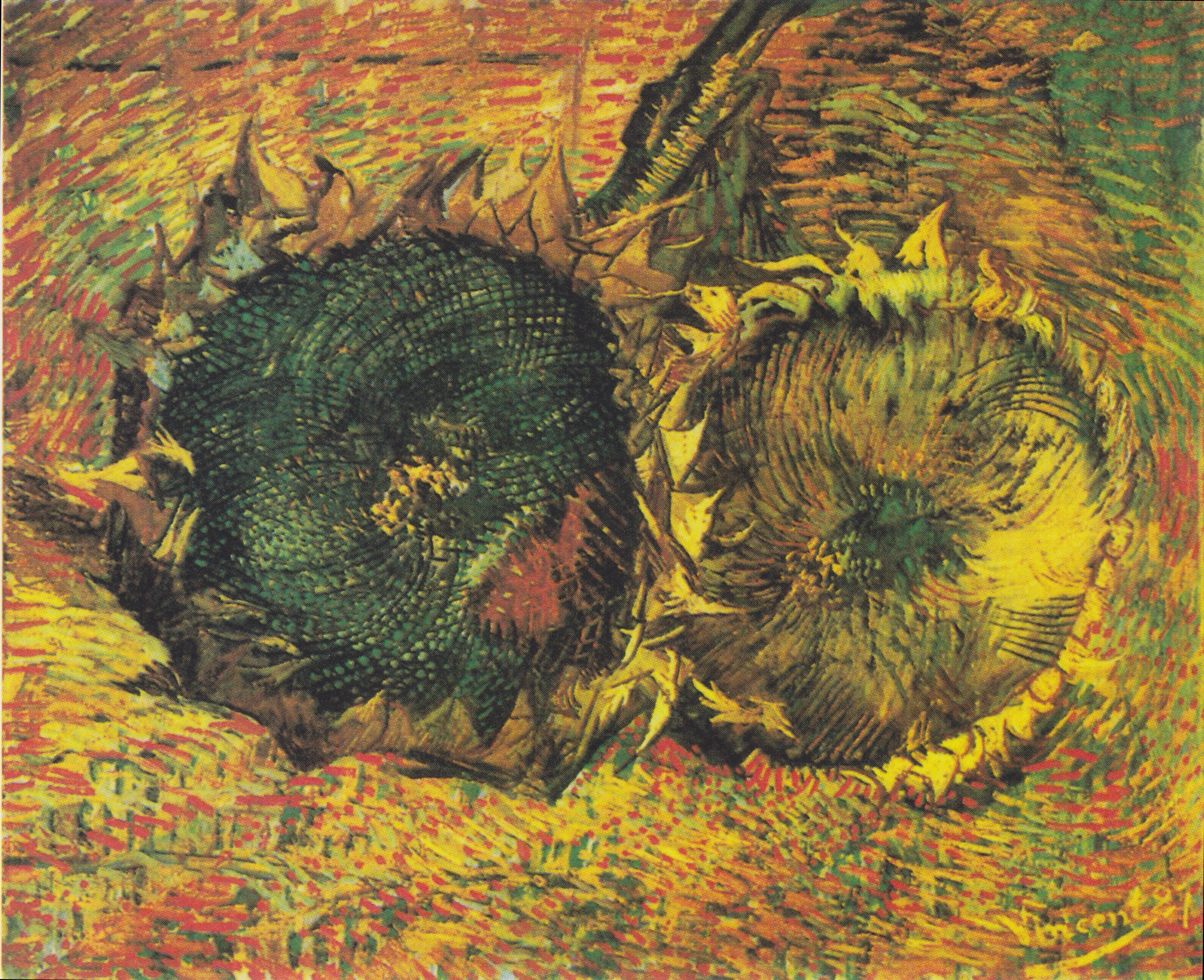The
pictures in the National Gallery exhibition are limited to the last four years of Van Gogh's life, 1886-90. Flowers are in nearly all the paintings; he also noticed long blades of grass and butterflies or a
Giant Peacock Moth (immortalised with Arum lilies in 1889). The same vase appears in several compositions, with its colour slightly changed to harmonise with the colours of its contents. When he observed flowers he was looking for "
des oppositions de bleu avec l'orange, de rouge avec le vert, de jaune avec le violet, cherchant les tons rompus et neutres pour harmoniser la brutalité des extrêmes" (my emphasis).
 |
| The sunflowers admired by Gauguin |
His tendency to concentrate intensely upon "one blade of grass," his outlining of of
iris leaves, his cropping of trees to leave their heads out of the picture was all under the influence of the Japanese artists he studied. His
impasto was not so Japanese, though. The red paint in his
Poppy Field and the white in his
Pink Roses was like sculpture in its application. He experimented with brushstrokes in a dynamic way, trying out pointillism or Cézanne-like streaks or even using the back of his brush (e.g. in
Sunflowers, 1887––Gauguin liked this one). The blue sky backgrounds are full of movement. In the
View of Saintes-Maries-de-la-Mer, which is really a picture of lavender fields, layers of brushstrokes force the viewer to look at both foreground and background. His pictures of Arles are like this too, with a horizon line near the top of the canvas and a fascination with the plants close at hand; diagonals create the impression of depth in the middle ground. Arles was actually an industrial city, but looking at a Van Gogh painting of this area, you wouldn't think so. Sometimes he "zoomed in" as the exhibition notes put it, to concentrate on a mere patch of dandelions. A close-up of ears of wheat all but makes you hear the sound of the wheat swaying in the wind.
The elongated, horizontal canvasses he began to use in 1890 seem to indicate that he had finally "found his style" as our tour guide said. The trouble was, he didn't survive much longer, shooting himself after the
last of the wheatfields.


No comments:
Post a Comment